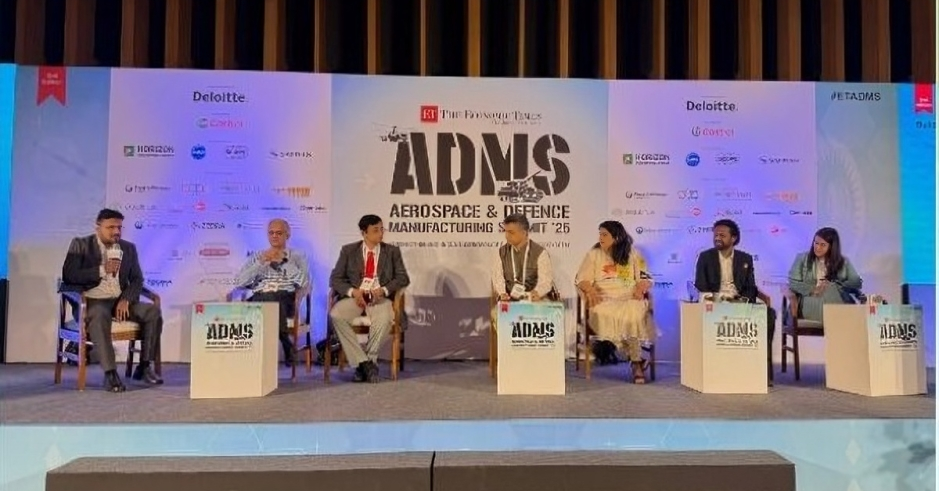As part of a six-member panel with government and industry stalwarts, Subbu shared about the nuances of manufacturing advanced materials in India with one goal – delivering the best in protection to our soldiers at the front.
Over the last decade, the government has put the pedal on defence reforms and accelerated indigenisation to attain self-reliance. For the entire ecosystem to evolve and contribute to this effort, knowledge-sharing from industry leaders with domain expertise, R&D maturity and delivery excellence is critical.
Since the last 70 years, CUMI has been working in the background to connect the dots across the ecosystem, helping MSMEs scale up, solidifying partnerships with government and research institutions, sharing expertise to augment forward integration, and strengthening the domestic supply chain. Subbu Venkatachalam, Head of Defence & Aerospace, who was part of a panel at the recent ET Aerospace & Defence Manufacturing Summit organised by ET Manufacturing in Bangalore, shared his insights and perspectives.
The panel discussion on ‘Building a Robust Aerospace & Defence Manufacturing Ecosystem in India‘ – delved into strategies to enhance domestic production, developing a robust manufacturing infrastructure, fostering innovation in India, and addressing the challenges associated with technology transfer and indigenous development.

Subbu tied the conversation right to the heart of indigenisation – focusing on the key aspect of producing a range of different materials in India to really have complete control on what we build. Right from difficulty in material sourcing, high cost unless accompanied by scale, failure of defence vehicles to perform when imported and not designed in India for our unique climate and terrain. Mainly, his emphasis was on considering who we are ultimately manufacturing for – the end users – our soldiers.
How do we really work with academia to further develop high-performance products and bring new indigenous materials into India – this is our focus.
“We make a lot of ceramic armour for bulletproof jackets and so on that gets used in combat zones. So, we really need to spend more time talking to them to understand how best we can support them. This is where testing and validation become extremely important. With just two labs in India to validate ballistic protection, there is a lot of pressure on them, with a huge backlog. So, expanding testing facilities will help improve the number of validations on ballistic protection”, Subbu shared.
With immense focus on MSMEs and expanding their contribution and innovation capabilities, he also spoke about working with them to solve key challenges. “They’re ready to invest but there are constraints such as availability of skilled labour, land, among others. Working hand-in-hand with them will benefit the entire ecosystem.”
His last point was on the collaboration with academia with many institutions such as IIT Kanpur having excellent Centres of Excellence for materials. “How do we really work along with them to further develop high-performance products and bring new indigenous materials into India – this is our focus.”
All of the above things happening together would be very powerful for India in a strategic sector like defence. “What’s remaining now is to speed up the process”, he added.
He also touched upon the importance of understanding technology gaps and building capabilities in-house. On ToTs, he stated, “The important thing is not to get the technology, but how well we can get it to be absorbed when we bring it into the market. There could be a tremendous amount of time spent in development but if the market doesn’t absorb it, then it will not benefit end-users.
The one line that tied up all the insights Subbu shared was, “It is of utmost importance for us to produce and innovate for our country, by our country to be able to truly make a difference.”

